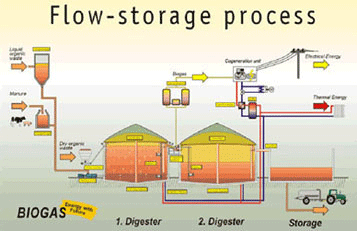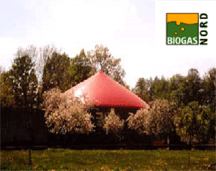BioMethane
Overview
Bio-methane production from dedicated energy crops has become a significant part of the overall global bio-energy production industry. Bio-methane (bio-gas) has the potential to yield more energy than any other current type of bio-fuel (e.g. bio-diesel, bio-ethanol) as a larger proportion of the biomass can be converted to product.
Bio-methane can be produced from a wide range of conventional biomass crops. Using maize, for example, typically yields between 1500 to 2000 m3 methane per hectare per year. With certain grass species yields as high as 5,000 m3 of methane per year per ha have been reported.
Increasingly, conventional bio-fuel crops are competing with food production for arable land. Closed algal bioreactors offer a promising alternative route for biomass feedstock production for bio-methane. Using these systems, micro-algae can be grown in large amounts (150-300 tons per ha per year) using closed bioreactor systems (lower yields are obtained with open pond systems). This quantity of biomass can theoretically yield 200,000-400,000 m of methane per ha per year.
Common stream:
The first stage of all bio-fuel production is the production of biomass.
Specific stream:
The Solar-Biofuels consortium is co-ordinating a range of research
streams to analyse and optimise the use of micro algae for bio-methane
production:
- IMB Queensland (A/Prof. Hankamer): Industrial feasibility studies
are being conducted to evaluate the use of micro algae produced
in closed bioreactors for bio-gasification.
- University of Bielefeld (Prof. Kruse): In cooperation with
the industrial partner Biogas-Nord in
Bielefeld, Germany, are con-ducting research on the analysis
and optimisation of algae biomass as an alternative substrate
for bio-methane production.
- University of Karlsruhe (Prof. Posten): The optimisation of bioreactor systems de-signed for high throughput algae production for bio-methane production.
Picture below provided by Biogas Nord AG:



